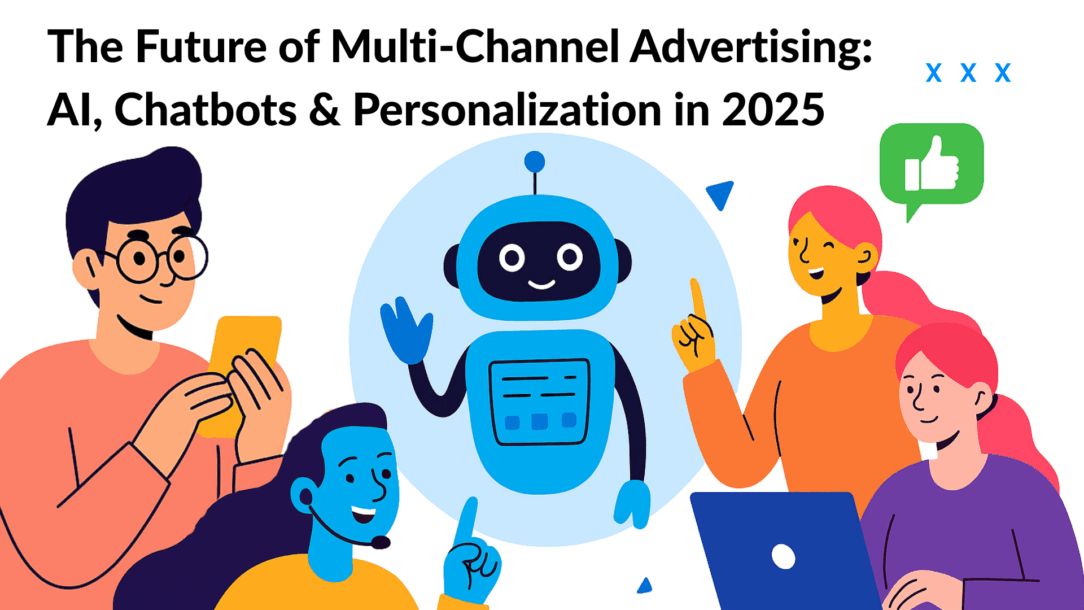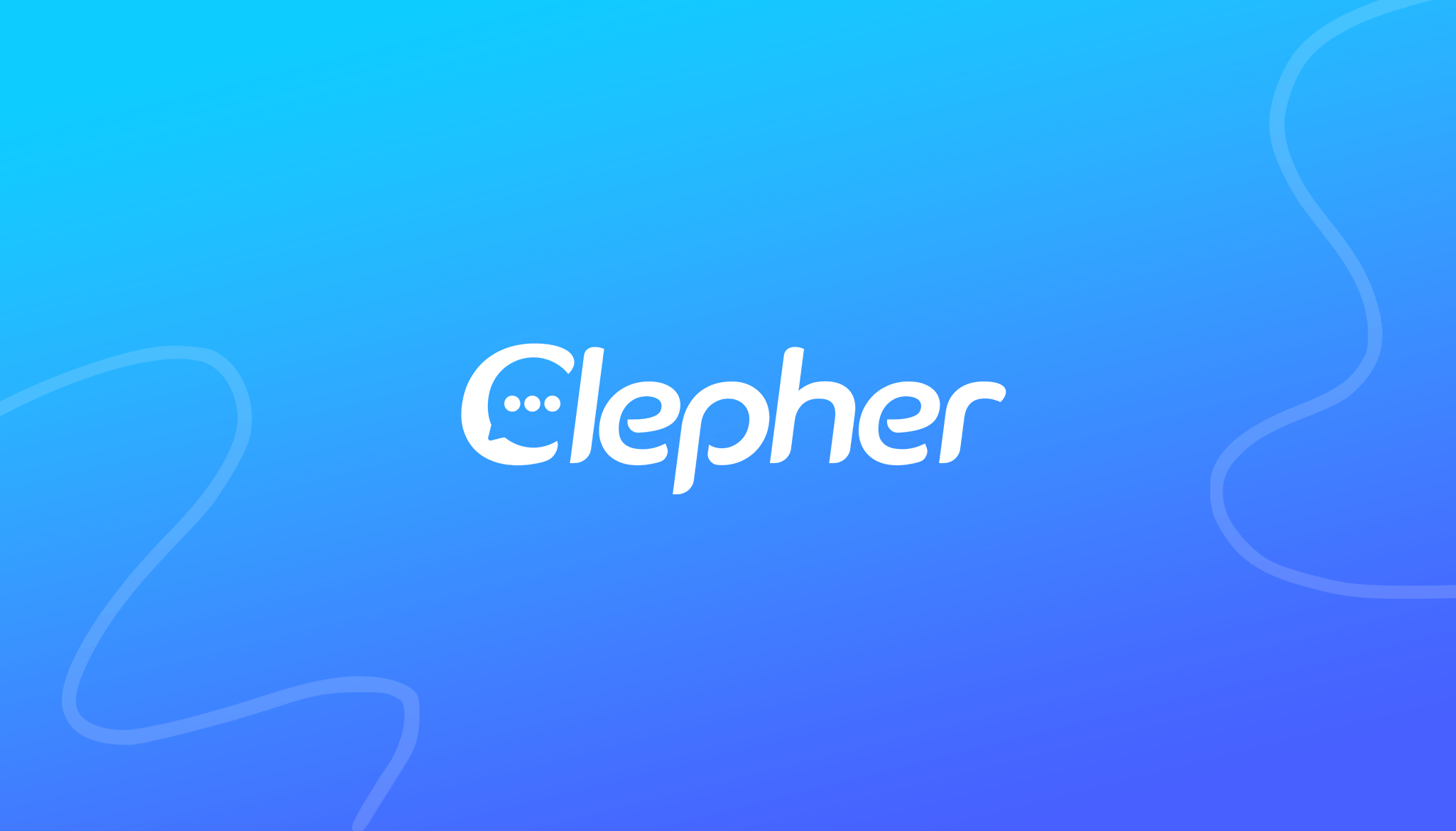Are your marketing campaigns ready for 2025?
If not, you’re already behind.
The future of multi-channel advertising isn’t just about being everywhere—it’s about being everywhere intelligently.
In 2025, 95% of customer interactions are expected to be powered by AI, making personalization faster and more effective than ever.
And it’s not just about AI. Chatbots are transforming customer engagement. The global AI chatbot market is projected to reach $46.6 billion by 2029 in one study, growing at an annual rate of 23.3%.
But here’s the kicker: 89% of marketing decision-makers consider personalization essential for their business’s success over the next three years.
So, what’s the takeaway?
The future of advertising isn’t about casting a wide net—it’s about casting a smart, personalized net across every channel.
Ready to dive in? Let’s explore how AI, chatbots, and personalization are reshaping the landscape.
Why Multi-Channel Advertising Is Evolving
Some facts: Multi-channel marketing, as we know, is changing fast.
It’s no longer enough to just post on Instagram, run a Google ad, and send an email. Customers expect seamless, intelligent experiences across every touchpoint.
Consider this: 74% of consumers get frustrated when content isn’t personalized (Evergage, 2023). That’s nearly three out of four people leaving your campaigns because your messaging feels generic.
AI and automation aren’t just buzzwords—they’re the tools that make multi-channel strategies smarter. Predictive analytics can now tell you which ad, on which channel, at what time, will likely convert a specific user. No more guesswork, no more wasted spend.
In short: the old multi-channel playbook won’t cut it anymore. This new era demands intelligence, personalization, and real-time engagement across channels.
AI in Multi-Channel Advertising
Guessing is expensive.
AI doesn’t guess. It predicts, optimizes, and decides which ad, on which channel, at what time, will hit your exact audience.
In 2025, businesses using AI for marketing are expected to increase conversion rates by up to 30% (Salesforce, 2024). That’s not hype—that’s real revenue.
Imagine this: a customer sees a Google ad in the morning, browses your Instagram in the afternoon, and receives an email at night—all personalized to their behavior in real-time. AI connects the dots. You don’t chase the customer. The customer is guided.
Predictive analytics helps you target smarter, not harder. Dynamic content adjusts automatically. AI even tells you which creative works best on TikTok versus LinkedIn. No more wasted ad spend.
Bottom line? Multi-channel advertising without AI is like fishing without bait—you might catch something, but not much.
Chatbots in Multi-Channel Campaigns
Faster Replies, Happier Customers
People don’t like waiting. When someone asks a question on Facebook or your website, they expect a quick reply. Research shows that 82% of consumers want an immediate response to their sales or marketing questions. If they don’t get it, many just leave. Chatbots solve this. They reply instantly—day or night—so no lead slips away.
More Than Simple Questions
Old chatbots could only answer basic things like store hours. Today, AI-powered bots are smarter. They understand what people mean, not just what they type. Take Sephora’s chatbot—it doesn’t stop at telling you about products. It helps you find items that fit your needs, suggests shades, and even books appointments. This feels less like “customer support” and more like a personal assistant.
Always Available
Unlike human teams, chatbots don’t need breaks. If a customer messages at 2 p.m. on Instagram or 3 a.m. on WhatsApp, the reply is instant. According to Juniper Research, chatbots are expected to save businesses $11 billion every year by 2025, thanks to reduced support costs and better conversions.
From Chat to Checkout
Chatbots don’t just answer—they sell. Domino’s created “Dom,” a chatbot that lets people order pizza directly through Messenger. No forms, no calls. Just a quick chat, and the order is placed.
Why Do They Matter in Multi-Channel Campaigns?
In multi-channel advertising, people move fast. Someone may click your ad on Instagram, visit your site, then bounce if they don’t get what they need. A chatbot can step in right there: “Need help?” or “Want 10% off today?” That small step keeps them engaged and pushes them toward buying instead of leaving.
Latest Data & Insight for AI & Chatbots
- The global chatbot market was about US$15.6 billion in 2024, and projected to hit US$46.6 billion by 2029, growing at ~24.5% CAGR. Big Sur AI+2Rev+2
- Approximately 987 million people use AI chatbots today across websites and apps. Exploding Topics+1
- 71% of big companies plan to implement chatbot technology soon. Sixth City Marketing
- In retail & ecommerce, chatbots are reducing cart abandonment by ~20-30% and visitors who get high-intent chatbot messages are ~5x more likely to convert than those who don’t. fullview.io
- “Conversational AI market size (chatbots + voice bots etc.) is expected to grow from USD 10.7B in 2023 to USD ~29.8B by 2028.”
What Tech Leaders Are Saying
- Microsoft’s AI division head, Mustafa Suleyman, says AI companions (chatbots) will take on “personalized” roles: remembering your preferences, adapting voice/style, doing little things so you don’t have to repeat. AP News
- AI is being viewed not just as automation, but as empathy + memory + context — features tech leaders believe will define next-gen user experience. (E.g. leaders saying AI will change everything and shift how we think of customer interaction.)
- According to ExplodingTopics, the chatbot market already reached US$15.6B in 2024 and is set to triple by 2029. Nearly 1 billion people use chatbots today. For you, this means that if you’re not using chatbots in your multi-channel strategy, you’re missing a huge part of your audience.
- Microsoft AI head Mustafa Suleyman predicts that future chatbots won’t just answer—they’ll remember. Preferences, past conversations, tone. That level of context turns bots from tools to near-assistants.
In retail & eComm, chatbots that send intent-based messages see ~5× higher conversion rates than generic pop-ups or forms. That’s the kind of leverage AI gives you in multi-channel campaigns.
Personalization Across Channels: Speak to Your Customer, Not the Crowd
Your audience sees hundreds of ads a day. If your message isn’t relevant and personal, it’s ignored—swiped past, deleted, or scrolled over.
Research shows that personalized campaigns drive 3× higher engagement and 2.5× higher conversion rates (Salesforce, 2024). That’s not just numbers—that’s sales, revenue, and loyal customers.
Think about a shopper: they browse shoes on your website, pause, then leave. Later, they see an Instagram ad showcasing the exact sneakers they viewed, receive an email with a 10% discount, and a chatbot on Messenger reminding them it’s still available.
That’s personalization across channels in action—a coordinated, human-like experience that feels effortless.
The takeaway? Multi-channel without personalization is just noise. With personalization, it becomes a conversation—a guided journey that feels tailored, relevant, and irresistible.
Predictions for 2025: Smarter, Faster, Personal
By 2025, AI-driven creative suggestions will dominate campaigns. Imagine ads that automatically adapt copy, visuals, and CTAs based on user behavior in real-time. No guesswork. No wasted spend.
Chatbots will get even smarter. Natural language processing (NLP) will allow them to understand intent, answer complex questions, and guide customers across channels seamlessly. Your campaigns will feel personal, responsive, and human—without human typing.
Personalization will reach new heights. Every email, push notification, social ad, and SMS can be tailored to an individual’s behavior, preferences, and past interactions. Marketers who embrace this will see higher engagement, more conversions, and lower acquisition costs.
Multi-channel advertising isn’t just about presence—it’s about intelligence, speed, and personalization at scale. Get ahead, or get left behind.
Final Thoughts
Multi-channel advertising in 2025 isn’t just about running ads on every platform.
It’s about being smart. Being fast. Being personal.
AI predicts behavior. Chatbots respond instantly. Personalization makes every touchpoint feel tailored.
Ignore this, and your campaigns risk being background noise. Embrace it, and your ads guide customers seamlessly from discovery to purchase.
The future is here. The question is: are you ready?
Related Posts


